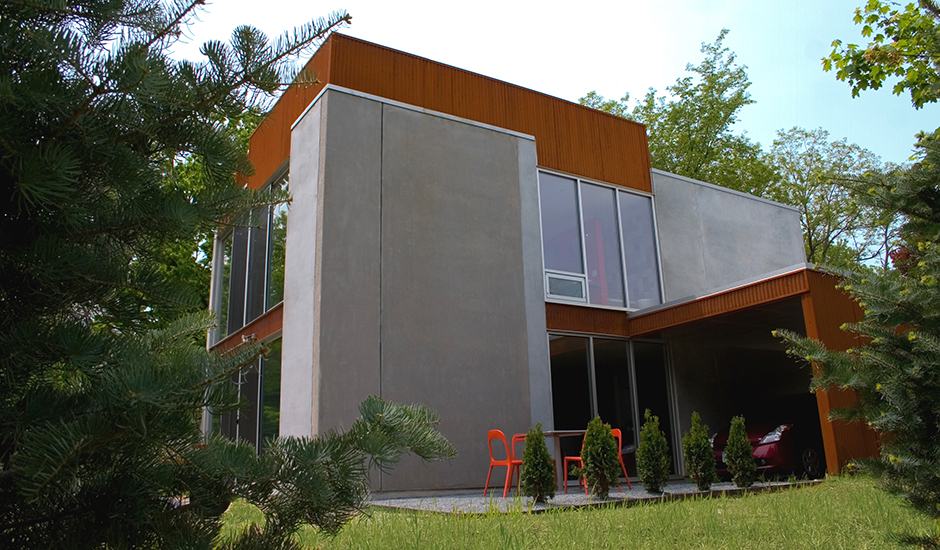If you can’t get in, you can’t live there…
Remodeling a home to elegantly accommodate a flush entry is a challenge. We have thought long and hard about it and decided it is socially irresponsible to design homes that do not accommodate people who use a wheelchair. We think that everyone wins with zero clearance entryways: people with disabilities as well as people with strollers, luggage, walkers, scooters, wagons, arms full of groceries — basically anyone can get in easily.

Let’s think about what makes an entryway accessible:
5’x5’ approach at the entry outside and inside for turning radius
This area provides ample room for maneuvering a wheelchair, scooter, and stroller. It also creates a nice space for large groups to gather when they enter your home, a place to meet and greet as people arrive and depart, and a place to contain the routine messes of coming-and-going.
Floor surface finishes
Non-skid/slip floor surfaces keep people safe by providing traction underfoot. Some products are non-skid by nature, like textured tile and stone. Others, such as wood, can be coated with a non-slip treatment to keep people safe during wet conditions. A “broomed” finish can be applied to most deck surfaces to improve traction.
Protection from weather
People are more likely to take their time getting into the home if the entryway is covered. Rushing can cause accidents like tripping and slipping. Covered entryways tend to be drier, as well, which reduces the risk of slippery (wet or icy) conditions.
No bumps or curbs
The surface from the exterior to the interior must be level. The threshold can be recessed to create zero clearance. All flooring surfaces must be level, as well. There cannot be changes in elevation as the flooring changes from one material to another.
Wider doorway
A 34” wide door is just barely wide enough for a wheelchair to pass through. Easily accessible doorways are 36” or wider.
Lever style door handle
A lever style handle can be opened with minimal effort. It can be operated without the user gripping it. Lever style handles are great for people with low strength and poor hand-eye coordination. They are also great for people with their hands full!
Technology locks
Remote control locks, push button codes, and key fobs are great alternatives to traditional locks-and-keys.
A kick plate at the bottom of the door
A kick plate will prolong the life of your door and maintain its nice finish.
Motion sensor lighting
Ensure that the light comes on at your approach and illuminates the lock, handle, floor, and walk way.
A place to set things down
A bench, shelf, or table to the side of the door where the handle is located is a convenient place to set things down when your hands are full. It provides a place to place packages, parcels, groceries, etc. within reach so that you do not have to bend over or kneel in the process of entering the home.
Related Posts
Luminary Arts Center honored with AIA Minneapolis 2024 Merit award
Shelter's work on the renovation of the Luminary Arts Center has been recognized with an AIA Minneapolis Merit Award. AIA…
Read moreFlower Valley Homestead selected for 2024-2025 Home of the Month program
We're excited to announce that Flower Valley Homestead has been selected as one of twelve projects in the AIA Minnesota…
Read moreThe ADA in Context
We talk about the “ADA” and “ADA compliance” a lot in our industry, forgetting that not everyone we interact with…
Read more